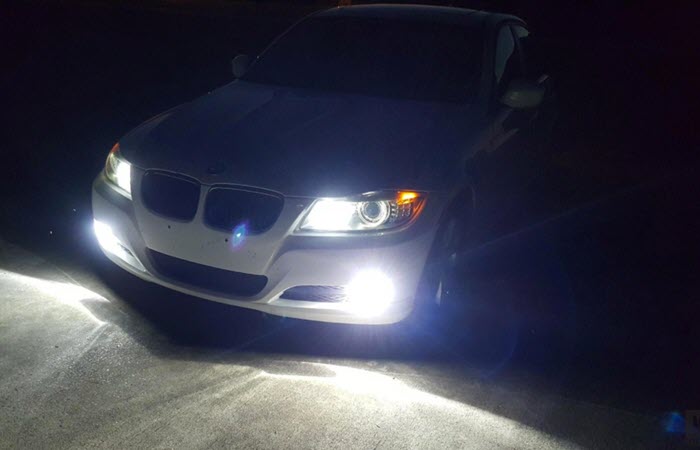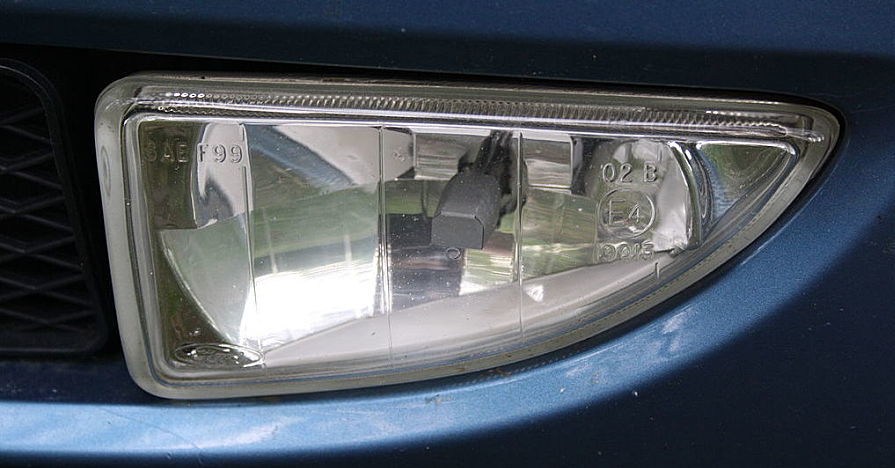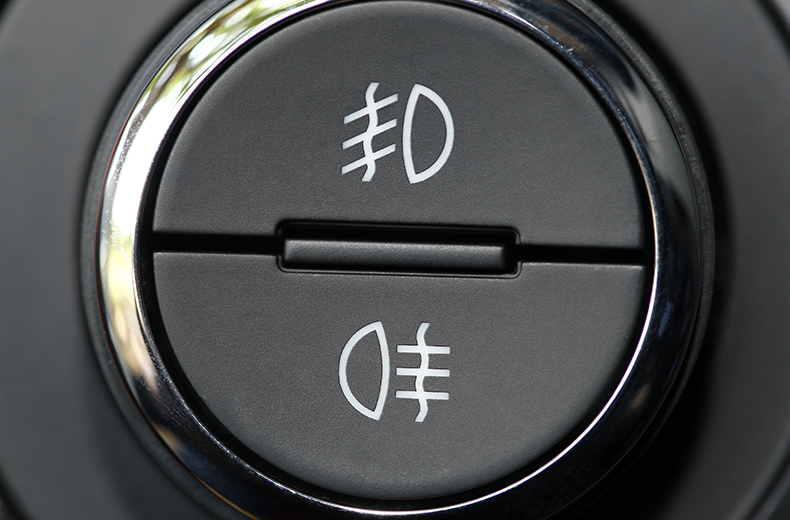What are headlights?
Headlights are a type of vehicle light that allows the driver to see toward the front while driving. Headlight bulbs emit light in low beams and high beams, helping the driver see better during night or rain.
They are also known as headlamps, headlight lamps, or (chiefly British) headlamps. They consist of a light source (normally an arc lamp) and reflector mounted in a housing. The glass or plastic cover protects the headlight bulb from dirt or debris strikes.
How do headlights work?
Headlights are paired with other components to make up the headlight system. Headlights begin as a sealed beam unit, where all of the components are combined into one unit. The sealed beam contains a filament or metal vapor lamp along with two mirrors that are used to direct the light produced by the lamp onto the reflector.
What are fog lights?
Fog lights are additional low-beam lights on a motor vehicle that can be turned on in lower light conditions than the vehicle's high beams. Their purpose is to produce a beam of light with an intensity that is useful for lighting up the road ahead, but that does not dazzle other drivers. Fog lights help improve visibility when driving in foggy conditions or in any other location where there is very little visible light, such as snowstorms.
They consist of a light source (normally an incandescent bulb) and a lens element, mounted in a housing.
Fog lamps are designed to help drivers see more clearly during conditions of limited visibility, such as heavy fog or falling snow. Drivers use these lights in place of their vehicle's primary headlight, which would only serve to blind other drivers on the road at night with their bright light. Fog-lamp development came about due to a need for wider, clearer vision when driving at night through poor weather conditions.
The first car company to offer factory-installed fog lights was Volvo in 1950. Within ten years after this innovation by Volvo most major car companies were offering factory-installed fog lamps as well.
How do fog lights work?
A vehicle's headlights may be supplemented with auxiliary lamps at the front and rear of the vehicle for improved illumination when driving in conditions requiring enhanced visibility such as dense fog or snowfall. Such lamps can improve overall nighttime visibility without producing too intense a glare for oncoming drivers, which would otherwise be caused by using the vehicle's regular low-beam headlamps. Fog lights produce much less light than normal headlights.
Types of fog lights are distinguished by their color, either amber or white. Laws typically require fog lamps to be mounted at the same height as the vehicle's headlamps, but they may also be mounted lower and further from the center of the vehicle.
What is the difference between fog lights and high beams?
Fog lights can produce a beam that is shaped like an upside-down "U" which helps drivers see in front of them while still lighting up enough of their path not to let them hit something in front of their car (like a stopped car for example).
Fog lights can make seeing in low-visibility conditions like fog, snowfall or heavy rain much easier on the driver. High beams are the opposite - they are very bright lights that are designed to shine far ahead of your car on the road without shining too much light right into other drivers' eyes. High beams can make seeing relatively easy during clear nighttime conditions.

What are the main differences between fog lights and headlights?
In general, headlights are standard vehicle lights that can be used to see at nighttime or during low-visibility conditions. Fog lights, on the other hand, are an additional set of low-beam lights on a motor vehicle that can only be turned on in certain types of lower light conditions.
- Size
Fog lights ad headlights are larger or smaller depending on what they are attached to. Headlights can be either smaller (the light components of which can actually be somewhat smaller than the high-beam light components on the same vehicle) or larger (with bigger housing and lens) if they are attached to SUVs, trucks, etc. Fog lights are designed specifically for cars and will cover only the front area of your car while headlights can shine in all directions and actually up and past the fog lights.
- Safety
Fog lights will make you more visible to other drivers while driving in conditions that require enhanced visibility such as dense fog or snowfall. Headlights come standard on every car and provide enough lighting to see ahead without blinding other drivers. In addition, since most vehicles have two sets of lights, fog lights only activate when headlamps are low or when they are turned on themselves. Headlights can be used independently to see in clear conditions without blinding other drivers.
- Location
While headlights are placed on the front of a vehicle, fog lights are found low and on each side of a car near the ground. These lights are designed specifically to illuminate the road ahead without blinding other drivers who may also be using their headlights at night or in low-visibility conditions.
- Color
Headlights come standard as white but can be changed to any color including amber if you so choose. In some countries, it is illegal for cars to have more than one color headlight set up whereas fog lamps can only be yellow by law even though they now come white as well.
- Light
The emitted light is also different between the two. Headlights emit a brighter light that travels further down the road. Fog lights can be yellow or white and have a very narrow, concentrated beam of light so they don't shine too far from your car. The light is thinner and is designed to light up the area in front of you that isn't lit by your headlights.
Is it obligatory?
In the USA headlights are mandatory and therefore you can't have fog lights alone. In some other countries, like the UK, it is not compulsory to use them so you can choose whether or not to install them on your vehicle.
Can you use a fog light in the car as a day running light?
No, you can't use a fog light for the day running light because it is designed to be used at night and in low visibility conditions. You can only use your high beams during the daytime.
Can you replace your car's headlight with a fog lamp instead?
Since headlights emit brighter lights, replacing your standard headlights with fog lamps isn't going to give you enough light while driving so it would be counterproductive trying to do this change since you are more likely to end up with an accident.
Would you benefit from having fog lamps on your vehicle?

If your car doesn't have headlights, for example, some old models of cars don't have them, then definitely install the fog lamps because they will provide enough light to see at night and in winter without blinding other drivers or pedestrians. If however, your car has both headlights and fog lights then it is not compulsory to use them but if you want to make yourself safe while driving, especially during dense fog or snowfall, use them! Otherwise, keep the standard setup.
How should you care about fog lights and headlights?
Maintaining your headlight and fog light will help ensure that they don't turn on when you drive during the day. There is a switch you can use to turn them off but if this gets out of alignment it may cause your lights to come on even when it's clear outside. Make sure your headlights and fogs are clean and not full of condensation or ice before driving in low visibility conditions such as snowfall or dense fog.
Cleaning your fog light and headlights can ensure that your lights don't turn on when you drive during the day. There is a switch to turn them off but if this gets out of alignment it may cause your lights to come on even when it's clear outside. Make sure your headlights and fogs are clean and not full of condensation or ice before driving in low visibility conditions such as snowfall or dense fog.
Replacing your car's headlight with a fog lamp won't be beneficial because they emit a brighter light that travels further down the road. Fog lights can only be yellow by law, even if they come white as well, and have a narrow, concentrated beam of light to illuminate the area in front of you that isn't lit by your headlights.
Legacy
In some countries, it is not compulsory for cars to have fog lamps while in others it is illegal for them to have more than one color headlight set up so check before installing anything. If your car doesn't have headlights then definitely install the fog lamps since they provide enough light to see at night and during winter without blinding other drivers or pedestrians.
If your car has both headlights and fog lights then keep the standard setup. Otherwise, you won't get enough light while driving if you use the fog lights only because it's designed to be used during low visibility conditions like dense fog or snowfall.
In the USA headlights are mandatory and therefore you can't have fog lights alone. In some other countries, like the UK, it is not compulsory to use them so you can choose whether or not to install them on your vehicle.
Fog lights are only yellow by law, even if they come white as well, and have a narrow, concentrated beam of light to illuminate the area in front of you that isn't lit by your headlights.
If your car doesn't have headlights then definitely install the fog lamps since they provide enough light to see at night and during winter without blinding other drivers or pedestrians. If however, your car has both headlights and fog lights then keep the standard setup. Otherwise, you won't get enough light while driving you use the fog lights only, so it's designed to be used during low visibility conditions.

Most cars today come with factory-installed HID (High-Intensity Discharge) headlights that have a blue coating. You can't replace these with standard yellow halogen bulbs which you normally see because the color temperature of the bulb will affect the way colors are perceived by your eyes -- making everything appear brownish-yellow.
What bulbs to choose for headlights and fog lights?
If you need to replace your fog or headlight, look for ones that are stated to be used either as a replacement (OE, OER, and ULO) or improved performance (OE standard). If you want more light output in your headlights an improved performance bulb is usually fitted with a blue coating whereas the standard one has a yellow coating.
Most car manufacturers today use HID bulbs for their headlamps and fog lamps because they provide high-intensity white light. The only problem with these lights is that when compared with halogen bulbs they take longer to light up when switched on due to the way they ignite gas stored in the bulb.
The difference between halogen and HID bulbs is that the former provides more light output with the same power consumption (watts) than HIDs. Headlights and fog lamps are most effective when fitted to match the vehicle's power source; for instance, if your car is fitted with an electrical system that can support up to 40 watts then you need to install headlights with similar wattage like 55 watts.
You also need to protect your expensive lights since they are susceptible to damage due to water, chemicals in road grime or salt, ultraviolet rays from the sun, and other elements. It is important that they are mounted high enough so that dirt doesn't splash up onto them but not too high so it interferes with your line of sight while driving.
Conclusion
The difference between headlights and fog light is that headlights are compulsory for cars and they produce a wide beam of light to provide good sight even in the dark, whereas fog lights have a narrow, concentrated beam of light which is used during low visibility conditions like dense fog or snowfall.
So it's important to understand the difference between headlights vs. fogs before installing them on your vehicle. Make sure you check with your local laws if it requires headlight installation because not having them may lead to fines from law enforcement agencies.
In case you already have both then keep the standard setup unless swapping is possible without affecting the factory system features. If changing anything then do so safely by disconnecting one unit at a time and checking whether it works before connecting another component again.